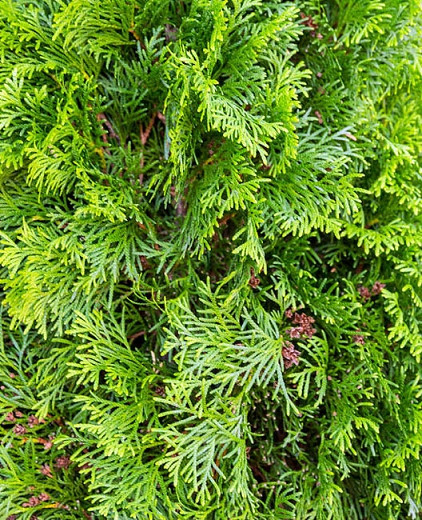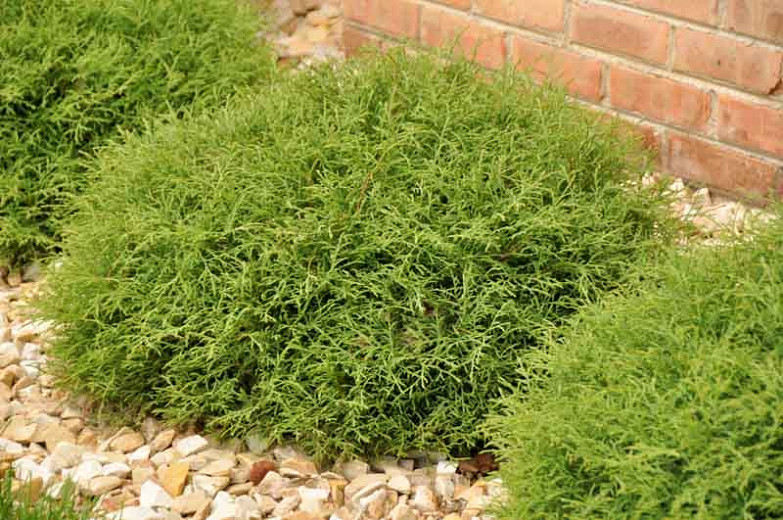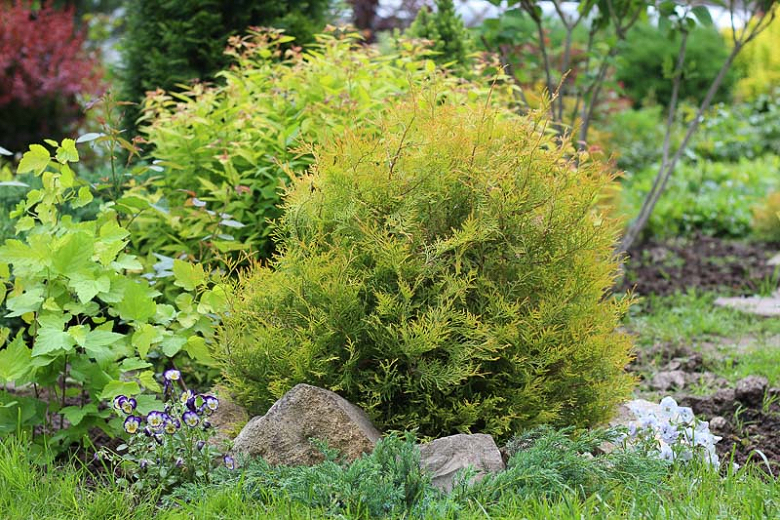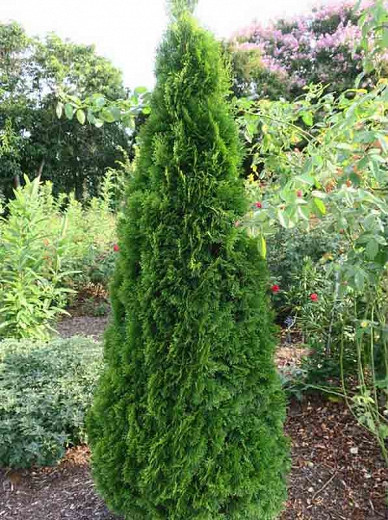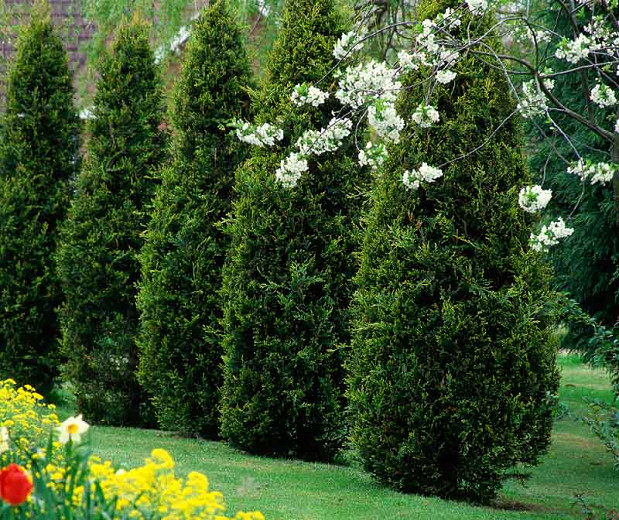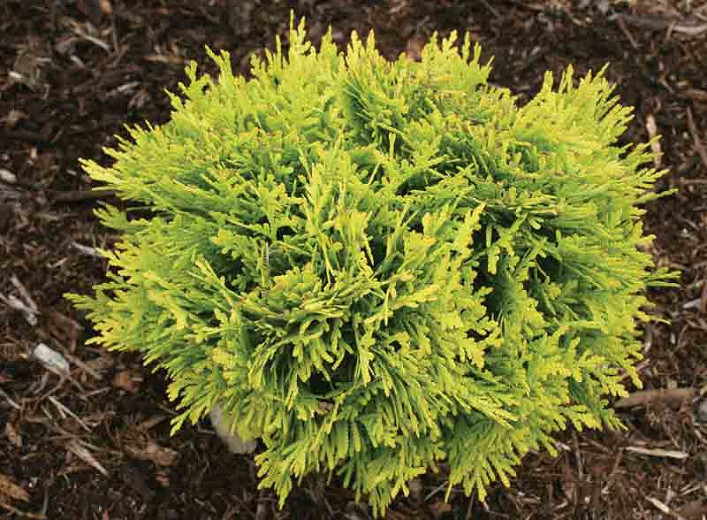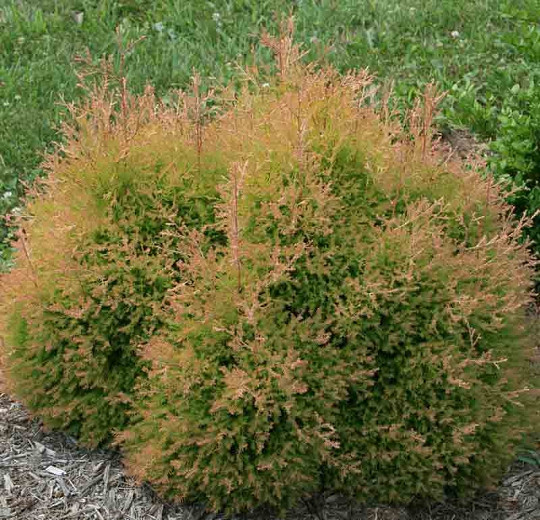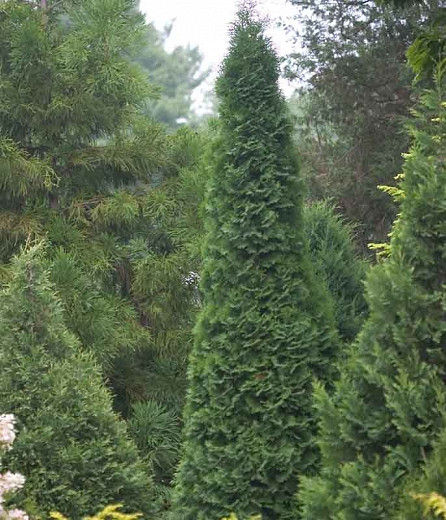Thuja occidentalis Degroots Spire (American Arborvitae)
A beautiful pyramidal form, Thuja occidentalis ‘Degroot’s Spire’ (American Arborvitae) is a dwarf, evergreen shrub with twisted, feathery sprays of rich green foliage that takes on a purple tinge in winter.
A beautiful pyramidal form, Thuja occidentalis 'Degroot's Spire' (American Arborvitae) is a dwarf, evergreen shrub with twisted, feathery sprays of rich green foliage that takes on a purple tinge in winter. Slowly forming a majestic exclamation point in the landscape, it is reliable and cold weather resistant and represents a valuable, hardy alternative to cypress. When you bruise the foliage, it gives off a very pleasant fragrance reminiscent of citrus.
- Slow-growing, this American arborvitae can reach 20-30 ft. tall (6-9 m) and 4-6 ft. wide (120-180 cm) in 15-20 years.
- A full sun lover, this plant is easily grown in average, moist, well-drained soils. Usually appreciates some light afternoon shade in hot summer climates. Bear in mind that foliage density loosens up in too much shade. Tolerates a wide range of soils. Thrives in humid weather with regular rainfalls. Intolerant of dry conditions. Protect from drying winds especially when young.
- Perfect as a specimen plant or for shrub borders, hedges, and screens, as foundation plants. Suitable for rock gardens. Performs well in wet areas of the garden and near swamps and bogs. Attractive in containers too!
- No serious insect or disease problems. May be affected by spider mites, bagworms or coryneum canker. Susceptible to winter damage from ice and snow. Foliage tends to turn greenish-brown (burn) in winter from desiccation and/or quick temperature changes.
- Low maintenance, American arborvitae tolerates shearing well for a more tailored column. Prune in early spring before the onset of new growth. Provide a generous root zone mulch
- Propagate by semi-hardwood cuttings
- Native to Northeastern United States, Mid-Atlantic United States, Southeastern United States, North-Central United States, Central United States, Canada
Requirements
| Hardiness | 3 – 8 |
|---|---|
| Heat Zones | 1 – 7 |
| Climate Zones | 1, 1A, 1B, 2, 2A, 2B, 3, 3A, 3B, 4, 5, 6, 7, 8, 9, 15, 16, 17, 21, 22, 23, 24, A2, A3, H1, H2 |
| Plant Type | Conifers, Shrubs |
| Plant Family | Thuja |
| Exposure | Full Sun |
| Season of Interest | Spring (Early,Mid,Late)Summer (Early,Mid,Late)FallWinter |
| Height | 20' – 30' (6m – 9m) |
| Spread | 4' – 6' (120cm – 180cm) |
| Spacing | 48″ – 72″ (120cm – 180cm) |
| Water Needs | Average |
| Maintenance | Low |
| Soil Type | Chalk, Clay, Loam, Sand |
| Soil pH | Acid, Alkaline, Neutral |
| Soil Drainage | Moist but Well-Drained |
| Characteristics | Fragrant, Showy, Evergreen |
| Attracts | Birds |
| Garden Uses | Beds and Borders, Hedges and Screens, Patio and Containers |
| Garden Styles | City and Courtyard, Coastal Garden, Gravel and Rock Garden, Informal and Cottage, Traditional Garden |
